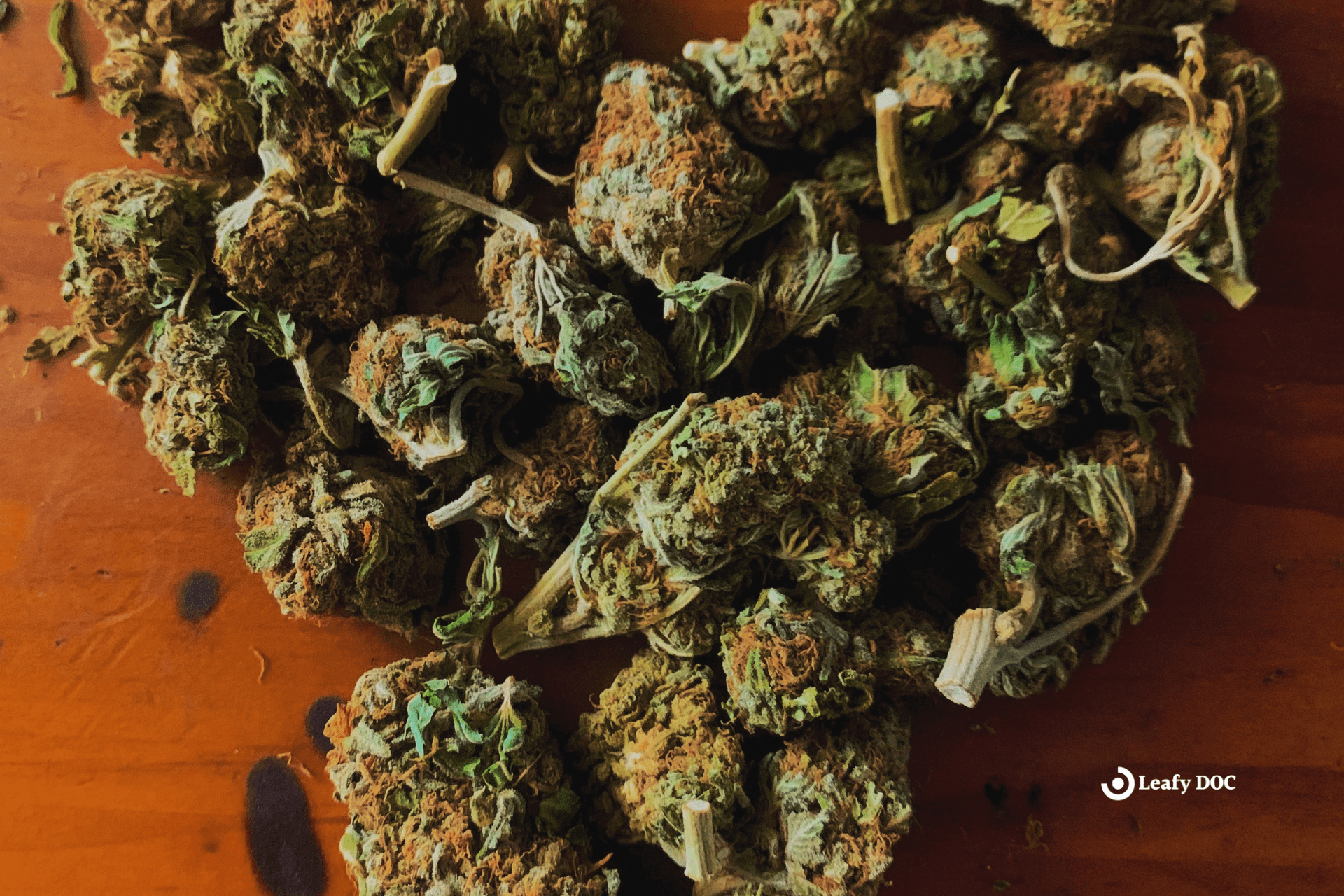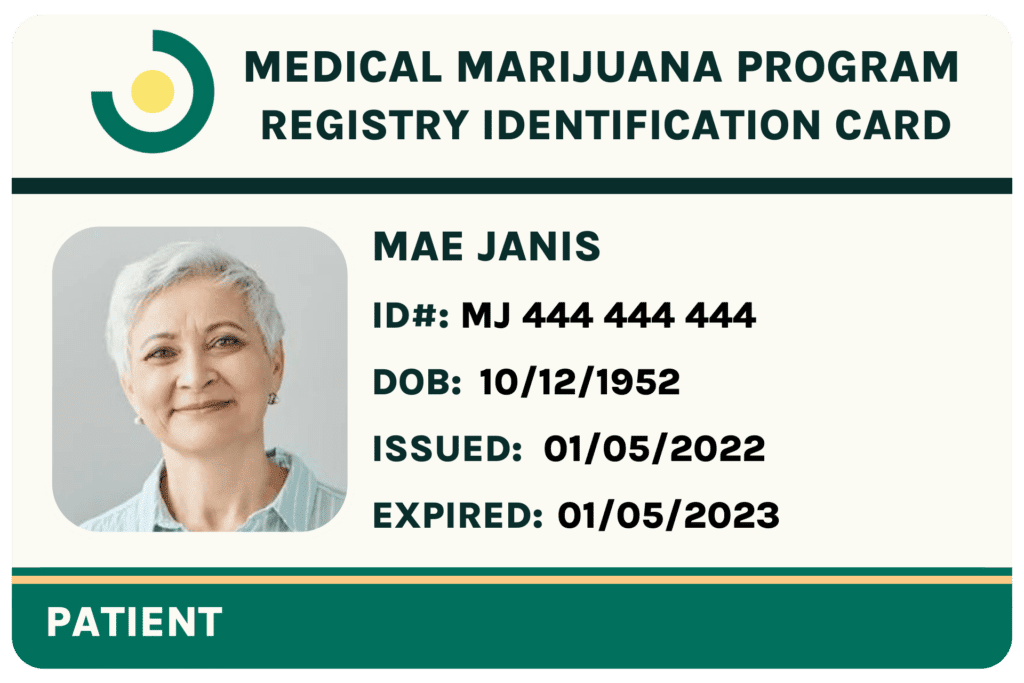How Much Is A Zip Of Weed?
by Haley Mills · September 8, 2023
Find out the truth about the cost of a zip of weed. Get ready to be amazed by the value and quality of your favorite green!

When buying weed, one of the first questions that often comes to mind is, “How much is a zip?” Understanding the measurements and cost of weed can be helpful for both seasoned users and those new to the world of cannabis. In this article, we will delve into the different measurements used to sell weed, factors that affect its price, and explore the average cost of a zip of weed.
Before we dive into the specifics, it’s important to note that the cost of weed can vary depending on various factors such as location, quality, and legality. While some states have legalized the recreational or medicinal use of marijuana, others still consider it illegal. These different legal frameworks can have a significant impact on the price of weed, as well as the availability and quality of the product. So, whether you’re curious about the cost of a zip for personal use or want to understand the market better, this article will provide you with the information you need.
Understanding Weed Measurements
So, you’re probably wondering how much weed you can get in a zip, right? Well, let’s break it down. In the world of marijuana, various measurements are used to determine the quantity of weed. One of the most common measurements is a “zip,” which refers to an ounce of marijuana. An ounce is equivalent to 28 grams. This measurement is widely used because it is a good balance between a small amount for personal use and a larger amount for sharing with friends or for a more extended period of time.
To put it into perspective, a zip of weed can typically fill up a small sandwich bag or a small mason jar. It’s important to note that the weight of the weed can vary depending on the density of the buds. Some strains may be denser and therefore weigh more, while others may be lighter and weigh less.
The appearance of a zip is heavily influenced by the characteristics of the cannabis strain. Buds from one strain might be small yet dense, packed tightly with trichomes, giving them a compact look. On the other hand, another strain might have fluffier, less dense buds with fewer trichomes. This difference can make a zip of the second strain appear larger, even though it weighs the same as the denser one.
Understanding these nuances helps in recognizing why a zip of one strain might seem bigger or smaller than another. It’s not just about the weight—it’s about the structure and density that shape your visual perception. Additionally, the price of a zip can vary depending on factors such as the quality of the weed, the region you’re in, and the demand for marijuana in that area.
Overall, a zip of weed is a common measurement used in the marijuana industry to refer to an ounce of marijuana. It is versatile and can last for a while or be shared among friends. However, it’s important to remember that marijuana laws vary from state to state and country to country, so it’s essential to be aware of the legal implications and regulations surrounding the purchase and use of marijuana in your area.
Why a Zip Might Appear Deceiving in Size
A zip of weed may seem deceiving because different strains can significantly vary in their bud structure. Here’s why:
- Density Matters: Some strains produce dense, compact buds packed with trichomes, making them appear smaller but heavier.
- Comparative Size: Other strains might have larger, fluffier buds with fewer trichomes, making them look like more, despite weighing the same.
This variation in bud density and trichome presence can lead to a zip of one strain appearing fuller or larger than another, even though both are technically the same weight. Understanding these differences can enhance your experience and expectations, ensuring you’re informed about what you’re purchasing.
Breaking Down a Zip of Weed
A “zip” refers to a standard ounce of cannabis, equal to 28 grams. Knowing how a zip breaks down into smaller units helps you plan purchases, portion usage, and get the most flexibility from your supply—whether you’re smoking, vaping, making edibles, or sharing with friends.
Eighths: A zip can be divided into 8 eighths, each weighing 3.5 grams. This is one of the most common purchase sizes.
Quarters: Split a zip into 4 quarters, each weighing 7 grams—a good middle ground between a small buy and stocking up.
Joints and blunts: A 28-gram zip can roll about 28 joints at 1 gram each, or 14 blunts at 2 grams each.
Half-ounces: Divide into two half-ounces, each with 14 grams—ideal for regular users who don’t want to buy a full ounce at once.
Pounds: Sixteen zips make up 1 pound, sometimes called a “pizzle” in cannabis slang.
A zip offers both cost savings and convenience. By understanding its breakdown, you can manage your cannabis use more effectively, track spending, and plan ahead based on your preferred consumption method.
Calculating THC Dosage When Using a Zip for Edibles
Turning a zip of cannabis into edibles such as brownies, cookies, or cannabutter requires careful attention to THC dosage per serving. Edibles often produce stronger and longer-lasting effects than smoking or vaping, so accurate calculations are key.
Calculate THC content: First, find the THC percentage of your strain. For example, if your ounce contains 20% THC, that’s about 5,600 mg of THC total (28 grams × 200 mg). Divide this number by your total servings to estimate the potency per piece.
Start low and go slow: Edible effects can take 30 minutes to 2 hours to appear. Avoid taking more until you feel the initial effects.
Control portions: Bake in a way that creates manageable serving sizes. You can always take more, but you can’t reverse an overly strong dose.
Beginner guidelines: If you’re new to edibles, aim for 5–10 mg THC per serving.
By calculating carefully and pacing yourself, you can enjoy homemade edibles with predictable, comfortable effects.
How Many Brownies Does a Zip Make?
With a zip of cannabis (28 grams), you can make multiple batches of brownies, depending on your desired potency and serving size.
Many recipes use 3.5–7 grams (an eighth to a quarter) per batch, producing 12–16 servings. That means a zip can make anywhere from four strong batches to eight milder ones—roughly 48 to 130 brownies in total.
Remember, edibles can have stronger and longer-lasting effects than smoking. Always calculate THC dosage carefully and start with smaller portions if you’re new to edibles.
Where Does the Term ‘Zip’ Come From in Relation to Cannabis?
The term “zip” in cannabis culture refers to an ounce of marijuana. But where did this nickname originate?
Originally, many medical dispensaries operated with a flexible approach. Rather than dealing with pre-measured, pre-packaged cannabis, they used a deli-style model. At these dispensaries, it wasn’t uncommon for purchases to be packaged in generic resealable bags, often similar to what you’d find in a household kitchen.
A standard resealable bag—like those commonly known as Ziploc—could comfortably hold about an ounce of cannabis. Hence, the term “zip” became shorthand to describe this quantity. This terminology was not only convenient but also discreet, allowing conversations about cannabis sales or inventory to occur without attracting unwanted attention.
Cannabis Purchase Limits by State
In states where cannabis is legal for recreational use, adults typically have a daily purchase limit for cannabis flower—most often one ounce. These limits apply to those without a medical marijuana card, and the rules can vary significantly from state to state.
For example, California, Colorado, and Nevada allow adults to purchase up to one ounce of recreational marijuana at a time. In contrast, states like Idaho, Wyoming, and Kansas still prohibit all recreational cannabis use, making any purchase illegal.
Medical marijuana cardholders often have more flexibility. Depending on the state, they may be able to buy, possess, or grow larger amounts of cannabis and access higher-potency products for therapeutic purposes. Keep in mind that not all states recognize out-of-state medical cards, so always confirm the rules before traveling.
Understanding your state’s cannabis laws—and how they differ for recreational and medical users—can help you stay compliant and make the most of your cannabis experience.
Navigating State Laws for Smarter Cannabis Purchases
Understanding your state’s cannabis regulations can shape what, how much, and where you’re able to buy. Being informed helps you avoid legal issues and make the most of every dispensary visit.
Purchase limits: In states such as California, Colorado, and Nevada, adults can typically purchase up to one ounce of cannabis flower per day for recreational use. In other areas, limits may be stricter—or recreational use may be banned entirely.
Medical card benefits: In states with tighter restrictions, having a medical marijuana card can mean higher purchase limits, access to stronger potency products, and in some cases, permission to grow your own plants. For example, medical cardholders in Oregon can legally purchase and possess more cannabis than recreational users.
Travel considerations: Some states recognize out-of-state medical marijuana cards, allowing you to buy cannabis while visiting. However, not all states offer reciprocity, so always check the rules before traveling.
By knowing both your local laws and those of any destination you plan to visit, you can tailor your purchases—whether that’s picking up a small eighth for the weekend or a full zip for longer use—while staying safe and compliant.
Traditional Cannabis Packaging Before Legalization
Before the wave of cannabis legalization in states like California, the way cannabis was packaged was quite different from today’s regulated standards.
Flexible Deli-Style Model
Medical dispensaries often employed a flexible approach reminiscent of a deli-counter experience. Rather than purchasing cannabis in pre-measured, pre-packaged quantities, patients could select the exact amount they wished to purchase, providing a personalized purchasing experience.
Utilizing Resealable Bags
Once a selection was made, the product was typically placed into resealable bags. These were not the sophisticated, child-proof packaging we see today but rather simple, generic bags, similarly styled to typical household storage bags. Notably, a standard bag could accommodate up to an ounce of cannabis.
Discreet Terminology
In conversations regarding these transactions or inventory management, the term “zip” became colloquial shorthand for an ounce of cannabis, which subtly referenced the capacity of these bags. This language had the added benefit of keeping discussions discreet, especially important in times when the legality of these sales was still in question.
Factors Affecting the Price of Weed
One of the key factors influencing the price of marijuana is its quality and potency. Like any other product, the higher the quality, the higher the price. High-quality marijuana is often grown with care, using specific techniques and nutrients to enhance its potency and flavor. These premium strains are sought after by many cannabis enthusiasts, leading to a higher price tag. On the other hand, lower-quality marijuana may be less potent and have a less appealing taste, resulting in a lower price.
Another factor that affects the price of weed is its legality. In areas where marijuana is legal, the price tends to be lower due to increased competition and regulated production. Legalization allows for a more open market, with multiple growers and dispensaries competing for customers. This competition drives the price down, making marijuana more affordable for consumers. However, in areas where marijuana is illegal, the price can be significantly higher due to the risks involved in production and distribution. The illegal market often has a limited supply and higher demand, which drives the price up.
THC Content in a Zip of Weed
The THC content in a zip of cannabis can vary widely depending on the strain. Some varieties are bred for a gentler experience, while others are cultivated for maximum potency.
Lower-potency strains such as Harlequin often contain around 5–15% THC. These are popular with medical cannabis users and those who want a more balanced effect without strong psychoactivity.
High-potency strains like Gorilla Glue #4 can reach THC levels of 25–30%, delivering powerful and long-lasting effects. These are typically chosen by experienced consumers seeking a stronger impact.
Checking lab results or product labels before purchasing ensures you know the THC percentage. This is especially important if you are sensitive to potency or aiming for a specific effect.
Average Cost of a Zip of Weed
You’ll be pleasantly surprised by the average price for a zip of weed. The cost can vary depending on several factors such as location, quality, and availability. On average, a weed zip, equivalent to 28 grams, can cost anywhere from $100 to $400. In some areas where marijuana is legal, the price may be lower due to increased competition and a regulated market. However, in areas where marijuana is still illegal, the price may be higher due to the risks involved in the production and distribution of the drug.
As of 2024, typical prices fall between $150 and $400. In cannabis-rich states like California, where supply is abundant and competition is high, you might find prices in the $150–$250 range. In contrast, states with heavier taxes or stricter regulations, such as Washington or Illinois, often see prices closer to $300–$400. These variations reflect not just supply and demand, but also local taxes and dispensary operating costs.
The quality of the weed can also significantly affect the price. Higher quality strains, such as top-shelf or exotic strains, can demand a higher price per gram or per zip. These strains are often grown with more care and attention, resulting in a better taste, aroma, and overall experience. However, lower quality or “mid-grade” weed can still provide a satisfactory experience at a more affordable price.
Availability is another factor that can influence the cost of a zip of weed. If the supply is limited or if there is high demand, the price may be higher. Conversely, if an abundance of weed is available, the price may be lower. Additionally, seasonal factors, such as outdoor harvests, can also affect the price as the supply fluctuates throughout the year.
Overall, the average cost of a zip of weed can vary depending on several factors. It’s essential to consider the quality, availability, and legality of marijuana in your area when determining the price you are willing to pay. As always, it’s crucial to purchase from a trusted source and to abide by the laws and regulations in your jurisdiction.
Regional Price Variations
Regional price variations for a zip of weed can provide valuable insights into the dynamics of the cannabis market. The cost of a zip of weed can vary significantly depending on the region and the product’s availability. In states where marijuana is legal for recreational use, such as California and Colorado, the price of a zip of weed tends to be lower due to the larger supply and competition among sellers. On the other hand, in states where marijuana is still illegal, the price of a zip of weed can be higher due to the risks and costs associated with the black market.
In addition to the legal status of marijuana, other factors can also influence the regional price variations. The quality and potency of the weed can play a role in determining the price, with higher-quality strains typically being more expensive. The proximity to the source of production can also affect the price, as transportation costs can increase the overall cost. Furthermore, the demand for marijuana in a particular region can impact the price, with areas of high demand experiencing higher prices compared to areas with lower demand.
Overall, understanding regional price variations for an oz of weed can provide valuable insights into the cannabis market. It can help consumers make informed decisions about where to purchase their weed and indicate the overall health and dynamics of the market. Additionally, it can inform policymakers and regulators about the impact of legalization and the effectiveness of regulations in controlling prices and ensuring a fair and competitive market.
Buying Weed Legally vs. Illegally
If you’re considering purchasing marijuana, it’s essential to understand the differences between buying it legally and illegally. In states where marijuana has been legalized, there are specific regulations and requirements in place for purchasing it. This usually involves attending a licensed dispensary, showing identification, and following specific guidelines. The benefits of buying weed legally include knowing the quality and potency of the product, as it has been tested and regulated by the government. Additionally, buying weed legally provides a safer and more controlled environment for the transaction, as security measures are in place to ensure the safety of both the buyer and the seller.
On the other hand, buying weed illegally comes with its own set of risks and challenges. When purchasing marijuana illegally, there is no guarantee of quality or safety. The product may be contaminated or laced with other substances, posing potential health risks. Additionally, buying weed illegally can put you at risk of legal consequences, as it is still considered a crime in many places. Law enforcement may actively monitor illegal drug transactions, and those caught buying or selling can face criminal charges. Be sure to weigh the risks and benefits before deciding on how to obtain marijuana, and to consider the laws and regulations in your specific area.
Conclusion
The cost of a zip of weed can vary depending on several factors. Understanding the measurements and factors affecting the price is crucial for both buyers and sellers in the cannabis market. The average cost of an oz of weed can range from $100 to $400, but it is important to note that regional price variations can significantly impact the price. Additionally, whether weed is bought legally or illegally can also affect the cost. It is important to be aware of the laws and regulations surrounding cannabis in your region to ensure you are making a legal and informed purchase. Overall, the price of a zip of weed is not set in stone and can fluctuate based on various factors.
Last Updated: August 14, 2025
Get Approved for Your Medical Marijuana Card in Minutes!

Get Your Medical Card
Connect with a licensed physician online in minutes

Like This Article?
Share with your friends
Table of Contents
Keep Reading
-
Cannabis-Infused Cuisine: Exploring Unusual Edibles
Unleash your inner foodie with cannabis-infused cuisine! Explore the world of unusual edibles and embark on a thrilling taste bud journey. Indulge in unique flavors today!
-
Understanding The CO2 Extraction Process For Cannabis
Uncover the secrets of CO2 extraction for cannabis in our comprehensive guide. Learn all about this popular method and enhance your knowledge today!
-
Your Guide to Pennsylvania Medical Marijuana Renewal Steps
Navigate the steps for Pennsylvania medical marijuana renewal to maintain your access to cannabis.



